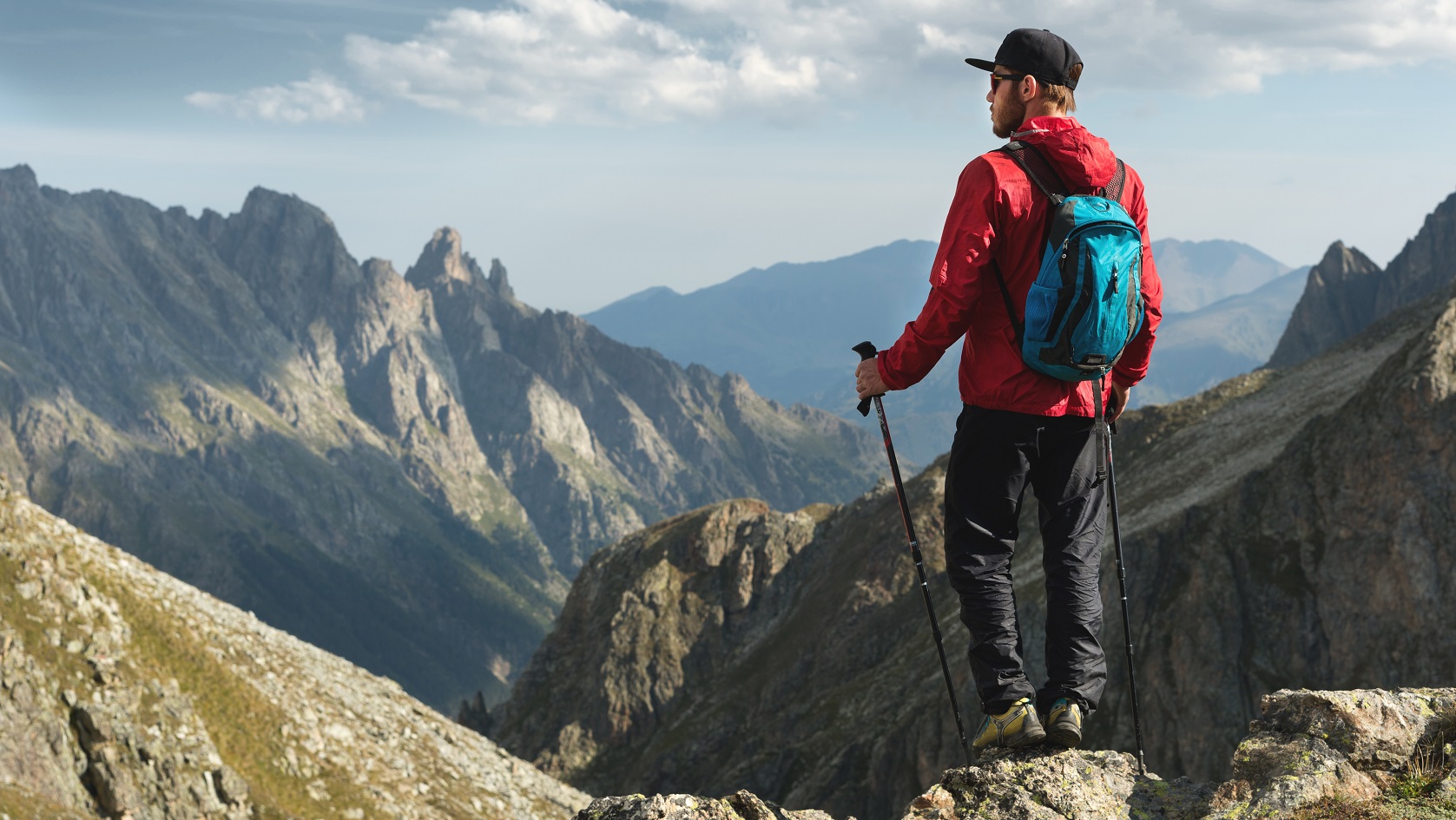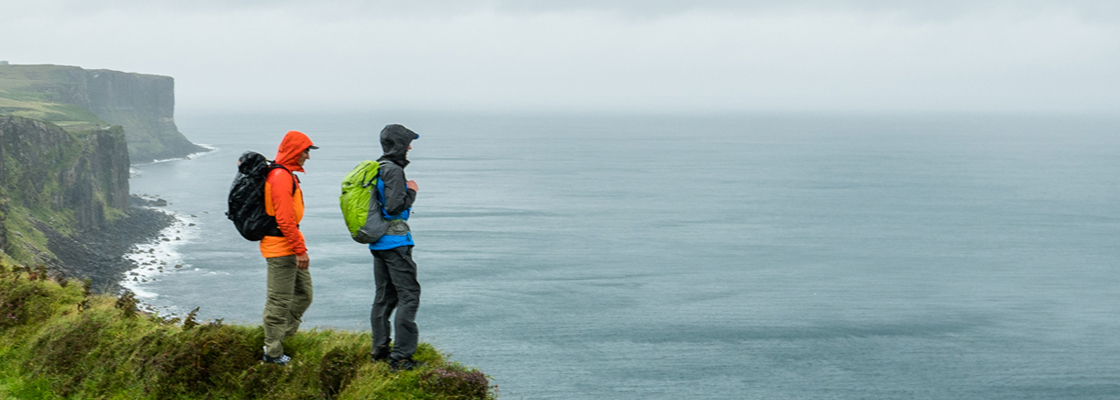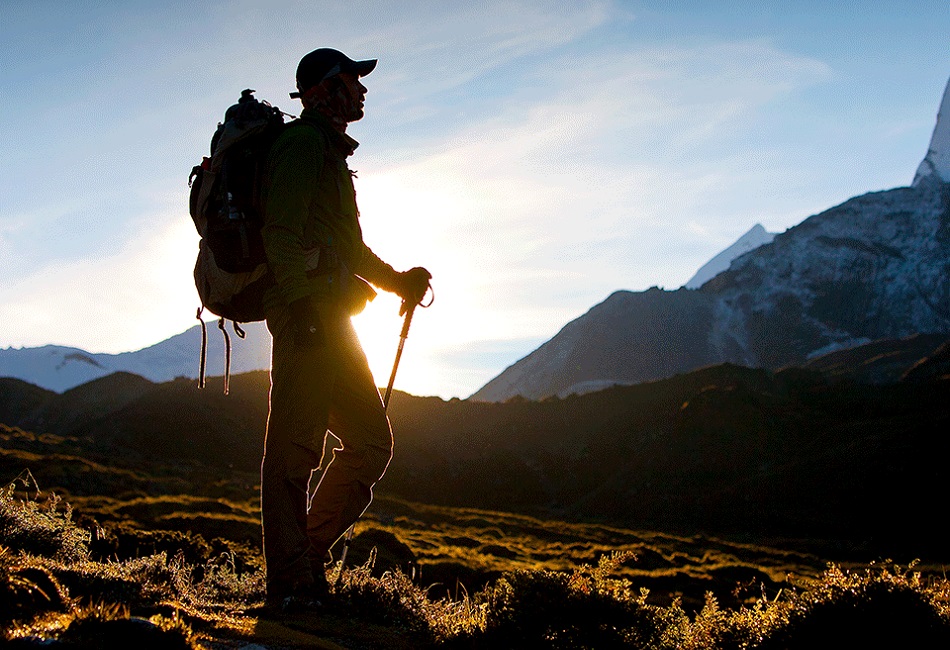The Call of The Trail: Why You Need Hiking Trousers
Do you often find yourself daydreaming of escaping the noise of urban chaos to discover the quiet crackle of forests or sense towering mountain peaks dissolving into clouds? If wanderlust and love for the outdoors flow through your veins, then you know the bliss of hiking across craggy footholds and boulder fields. But such adventures also test your grit and require protective apparel to retain warmth, fend off weather and prevent injuries. This is where hardy yet supple hiking trousers enter - your loyal leg shields on every ambitious sojourn.
When preparing for a hike, having the right type of trousers is essential. Hiking trousers are specially designed to provide comfort, range of motion and protection when walking for extended periods over various terrains. Selecting hiking trousers depends on factors like weather conditions, type of trails, and personal preferences around fit and features. This article will explore the key considerations around hiking trousers to help both novice and veteran hikers pick the best pair. The most important characteristic of good hiking trousers is durability. They need to withstand outdoor elements like brush and abrasive rocks without tearing. Synthetic fabrics like nylon and polyester blends are common choices as they dry quickly and minimise sweat. Many hiking trousers incorporate stretch fabric panels at joints for better ease of movement. Trousers with a loose, relaxed fit allow good airflow so legs don't overheat. Some have zip-off legs to convert between shorts and full trousers. When hiking in cold weather, it's advisable to opt for insulated trousers that trap body heat. Popular insulation materials used are fleece lining and down feather filling. These keep the upper legs and hips warm while allowing breathability. For wet conditions, waterproof yet breathable hiking trousers provide protection. These are treated with special membranes and coated fabrics that prevent moisture seepage while allowing water vapour to escape.
Finding Your Perfect Hiking Trousers
When selecting hiking trousers, it's important to consider aspects like sizing, adjustability and the inclusion of useful features. Taking accurate measurements of your waist size, inseam length, thigh width and calf width is the first step. As hiking involves dynamic movements, try sitting, crouching and lunging while trying on trousers to assess the fit. The waistband should sit comfortably without slipping and leg length should allow freedom of movement without dragging.
Consider Your Body Type and Size
Finding well-fitted hiking trousers begins by honestly measuring key dimensions using a tailor’s tape rather than guessing based on regular pants or desired dimensions. Waist circumference, full hip width, inseam length from crotch to ankle, thigh width and calf girth all impact achieving an optimal custom fit hiking for miles. Factor in wearing insulating mid-layers or base-layer leggings under the hiking trousers depending on the weather. Trying samples over these garage essential skin layers gives a realistic loaded fit. Seek adjustable waists with side cinch tabs and multiple lengths suiting your height too. Consider also mens hiking trousers come tailored differently than women's versions which integrate more stretch and articulation suiting wider hips and seat proportions. When doubtful about sizing, seek speciality outdoor stores with staff familiar with helping less typical frames like very tall or petite builds find correctly fitting hiking trousers instead of forcing into standard options uncomfortably. Remember the priority is flexibility and friction-free comfort striding trails all day before styling.
How You Move and Flex Matters More
The best-fitting hiking trousers prove their true mobility mettle matched only when mirroring real trail exertions and awkward moves. Bend fully, kneel, crouch and then take long, lunging steps at full extension when trying shortlisted options to assess genuine flexibility. Note any sleeve or gaps forming behind knees, and any inner leg seams straining during your deepest squat flex indicating suboptimal patterning. Try touching toes without compromising comfort to replicate sudden inclines stranding you off-balance briefly. Adjust any toggles and integrated webbing carefully, ensuring they don’t rub or slacken oddly shaped body areas while contorting. Skip options make audible stretching noises unable to handle flexing as vigorously knowing lengthy descents often wreck trousers lacking sufficient mechanical stretch. Getting authentic dynamic mobility right ensures hiking trousers always support striding ambitions fully and painlessly without restrictive materials stifling your most extreme leg extensions tackling those trail obstacles in the wilderness ahead.
Match Terrain and Typical Weathers Encountered
Factor what climes and geography local trails expose you to frequently when investing in higher-cost hiking trousers with speciality weatherproofing features beyond regular walking pants. Those Seattle dwellers slogging rainforests with annual rainfall exceeding most global cities need reliable water-repellant clothing almost year-round. So make note of average seasonal temperatures, typical monthly precipitation, windiness and abrasive trail surfaces like volcanic scree when planning purchases. This helps determine ideal technical hiking trousers features boosting life span cost ratio given localised outdoor realities better. Consider also UV index levels by latitude to protect legs against prolonged exposure risks which water-resistant fabrics can increase privately. By considering microclimate realities and donning hiking trousers expressly built to mitigate them, you complete journeys in optimal leg comfort regardless of familiar yet occasionally volatile surrounding whims.
Lifestyle and Intended Use
Finally, factor in the lifestyle context your hiking trousers embed within, gauging intended kilometres covered yearly and non-trail aesthetics occasionally mattering to determining the best selections balancing price, weight and durability wisely. The ultralight weekend day hiker ambling forest tracks close to suburbs needs less hardcore reinforced fabrics and weatherproofing features than off-grid explorers or peak ascension challengers pushing mileage into hundreds of annual kilometres. Consider also transitional versatility converting rugged hiking trousers into music festival camp wear or evenings out post-adventure to maximising cost per usage through hybrid designs that zip off converting into casual shorts. By clarifying likely yearly rambling extent alongside desired scenarios where men hiking trousers see secondary relaxed social usage beyond wilderness, helps filter suitable technical specifications hitting that optimal sweet spot between investment protection and adequately robust fabrics promoting my outbound goals irrespective of intended range.
Deep Dive into Hiking Trousers Major Styles and Fabric Choices
With continual fabric innovations, the array of technical textures available across hiking trousers today enables handling every weather whim and rugged terrain. Become versed in speciality fabric qualities before purchases to pick pants delivering exactly the desired protection, warmth or mobility.
All Season Softshells: Light Yet Tough
Modern softshell hiking trousers made using high-density nylon blends fend abrasions from granite walls and errant bramble thanks to exterior durable water-repellant coating. Strategic four-way mechanical stretch sections grant manoeuvrability quando scrambling up inclines while retaining body warmth better than summer mesh versions once gusts blow. Balancing weather protection, breathability and comfort softshell hiking trousers work across multiple seasons from gusty autumn wanderings to winter snowshoeing sans bulky hard shells. The tightly woven yet flexible softshell fabric also minimises moisture absorption during surprise light showers. Reinforced insteps, scuff guards and articulated knees ensure this light, stretchy and protective softshell legwear survives years of scrambling, hiking and backpacking trips across diverse climates and topography reliably.
Hard Shell Alpine Gear: Bomber Yet Packable
Serious high-altitude mountaineering or ice climbing demands formidable hard shell trousers shielding against tempest blasts while retaining heat. Made utilising waterproof yet breathable membranes like three-layer Gore-Tex or proprietary alternatives from Arc’Teryx, these bond outside weatherproofing and interior wicking efficiently. Reinforced insteps, tailored patterning benefitting harness wear and mixed fabric panels maximise flexibility for technical ascents. Though expensive and overkill for basic day hiking, hardcore shells withstand brutal conditions experienced at altitude and remain trusted tools for veterans and expeditions pushing towards those distant montane summits and ranges even as winter fast approaches each year.
Insulated Winter Wear: Heavy Duty Heat
Some chilly trails require supplemental warmth goose down feather filling or PrimaLoft insulation provided when fleece alone fails to thwart hypothermia. Popular in snowy regions like the Nordics and promising superior cold protection during lengthy winter sojourns, insulated trousers trap precious body heat. Concurrently tough water-repellant outer fabric keeps flurries and rainfall from seeping into feather or synthetic channels. Remember the compromise - these insulated trews trade packability for exceptional cold and wet weather defence so gauge intended trips before purchasing.
Summer Hiking Pants: Well Ventilated, Lightweight
When sunny skies lure ramblers out towards shimmering horizons, lightweight nylon Supplex hiking trousers balancing breathability with abrasion resistance make the best companions to fairer climes and soaring temperatures. Mesh linings across seats, knees and calves encourage cooling airflow during sweaty ascents while elasticated waists ensure next-to-skin comfort whatever gradients climb skywards. Perfect for hot continental summers tackling exposed desert canyon descents yearlong lacking shade or shelter options, these ultra packable trousers focus on ventilation for bushwhacking biking trails. Some use advanced durable water-repellant treatments to repel light monsoon rain showers, but the focus stays on promoting air permeability and drying preventing sticky discomfort over precipitous scree slopes and steep inclines under that baking summer sunlight.
Battle The Elements: Types of Hiking Trousers By Weather
With hiking trousers now crafted for every imaginable set of outdoor conditions, knowing what fabric technologies excel for certain weathers and climates allows smarter selections. Whether tackling Atlantic gales or baking desert trails, location-specialised trousers endure when the elements unleash fury.
Shielding From Rain, Wind and Cold
Battling tempestuous trails demands weatherproof fabric technologies balancing exterior protection with interior breathability. Hard shell trousers with bonded waterproof-breathable membranes as three-layer Gore-Tex shed sideways icy rain across Scottish glens without drenching base layers. Meanwhile, fleece backing and primaloft batting add warmth minus weight suitable for freak early winter storms. Combining fully taped seams, DWR coatings and storm flaps shields from soaking gusts when the heavens open unexpectedly. For wet climes and multi-day treks, choose trousers with 20K waterproof and 15K breathable ratings fending deluges without stuffiness.
Quick Drying and Moisture Wicking Fabrics
When deafening humidity replaces bone-chilling temperatures like traversing steamy South American foothills in Andean summer, sweat-combating fabric and ventilation prove vital. Look for light supplex nylon exteriors wicking internal dampness outward combined with polyester mesh lining portions channelling airflow across knees and seat. Utilising advanced technologies like Columbia's Outdry Extreme membranes doubles down on liquid-repelling abilities critical in persistently wet tropics. Consider built-in gaiters preventing saturated socks and concealed zips opening additional vents customisable to subtle climate shifts further afield.
UV Protection and Bug Defense
Venturing where few have roamed before under extreme exposure demands hiking trousers shielding against ruthless sun, strange insects and other hazards. combinations In sweltering deserts and savannahs, sunlight radiation requires UPF 50+ ratings even under light breathable pants to avoid burned legs later. When buzzing fauna halt progress, built-in insect guards keep caterpillars from ankles or disease-spreading mosquitos at bay before night falls. Ensure convertible trousers doubling over as shorts have equally protective fabrics shield from unrelenting exposure and unfamiliar critters liable during pioneering expeditions into the wilderness.
Insulated and Heated Designs
Braving the poles, climbing formidable faces or even surviving surprise blizzards means battening hatches against deadly hypothermia-threatening progress. Integrated insulation bonding thermos-like membranes and down feathers maintains prime body heat during sustained icy encounters. Heated trousers take things further with USB-powered inner pads warming thighs and calves automatically when the mercury plummets past tolerances. Combining windproof, thermal regulating and heat-generating fabrics prepares wearers for the bitterest environments where exposure quickly incapacitates while morale remains high continuing well into frigid nights afoot.
Gear Up Legends: Top Hiking Trousers Brands
With over 60 years of technical apparel expertise, a few heritage labels making hiking trousers stand above fleeting competitors intermittently glimpsing the outdoor scene. Let’s explore leading stalwarts behind dressing adventurers since their earliest exploits alongside relative newcomers earning that trust during recent daring firsts.
Patagonia: Eco-Friendly Innovators
Founding Patagonia in 1973 Yvon Chouinard focused on sustainable production ethics alongside durable climbing gear long before conservation became cool. Still family-owned, their hiking trousers use recycled water bottles and fishnets comprising durable stretch fabrics weathering Pacific squalls. The versatile Quandary hiking pants channel airflow preventing sticky sweat buildup during Californian heatwaves and Colorado inclines alike. Made ethically in Fair Trade-certified factories, Patagonia’s continued commitment to eco-materials and polar preservation raises the outdoor apparel bar higher through continual fabric innovations.
Arc’teryx: Redefining Extreme Demands
Forged designing mountaineering essentials hard enough for the brutal British Columbian Coast Ranges since 1991, Arc’teryx drones meticulously engineer each minutiae pushing apparel technology to stratospheric heights. Employing proprietary durable water-repellant treatments, insulation batting and laminated GoreTex textiles, their hiking trousers protect against tempestuous climes only understood battling the elements daily. Though premium priced and over-specced for average trails, standout innovations trickle down into wider seasonal collections. If your adventures demand battling the harshest environments on earth, Arc’teryx’s pedigree guarantees reliable quality in tackling the extremes.
Fjällräven: Proven Swedish Heritage
Hailing from Örnsköldsvik Swede Åke Nordin launched Fjällräven sixty years ago frustrated by a poor hiking kit failing his Arctic trips. Their signature G-1000 silent eco-canvas balances durability with supple flexibility and reliable water resistance ideal for hiking year-round. Today their Keb trousers made sustainably from recycled polyester and organic cotton represent a marvel marrying acclaimed heritage with continual fabric refinements suiting any conditions. If seeking trousers proven over generations along Nordic trails since the 1960s, Fjällräven’s timeless aesthetic and performance remain unmatched.
Montane: Premium British Mountaineering Gear
Since 1993 this UK brand has tackled hostile elements of Scotland’s infamous Cuillin Ridge forging meticulously designed products ready for uncompromising conditions. Montane’s premium Prism pants feature DIRECTIONAL Pertex Shield fabric fully waterproof yet breathable rated 20,000mm keeping bone dry battling North Atlantic fronts while articulated patterning liberates movement scrambling steep scree. Gaussian-mapped PrimaLoft insulation retains core heat when oceans spray icy gusts while durable reinforcements shield repeated granite friction uniquely tackling Britain’s harsh upland trails.
The North Face: Outdoor Outfitting Icon
Synonymous with equipping expeditions globally since 1966 The North Face stands durable test of time. Their bestselling Paramount Peak trousers optimised for fast-paced hiking employ two-way stretch nylon ripstop resisting abrasions while elastic waistbands ensure secure fit summiting inclines. Signature Ultra protective soft shell fabric toughens high wear zones shielding from sharp scree while FlashDry wicking mesh vents excess steam when tackling steep ascents in the summer heat. For a versatile year-round hiking kit, The North Face's extensive trousers collections tick all boxes.
Related articles

Let us know you agree to cookies
We use marketing, analytical and functional cookies as well as similar technologies to give you the best experience. Third parties, including social media platforms, often place tracking cookies on our site to show you personalised adverts outside of our website.
We store your cookie preferences for two years and you can edit your preferences via ‘manage cookies’ or through the cookie policy at the bottom of every page. For more information, please see our cookie policy.










